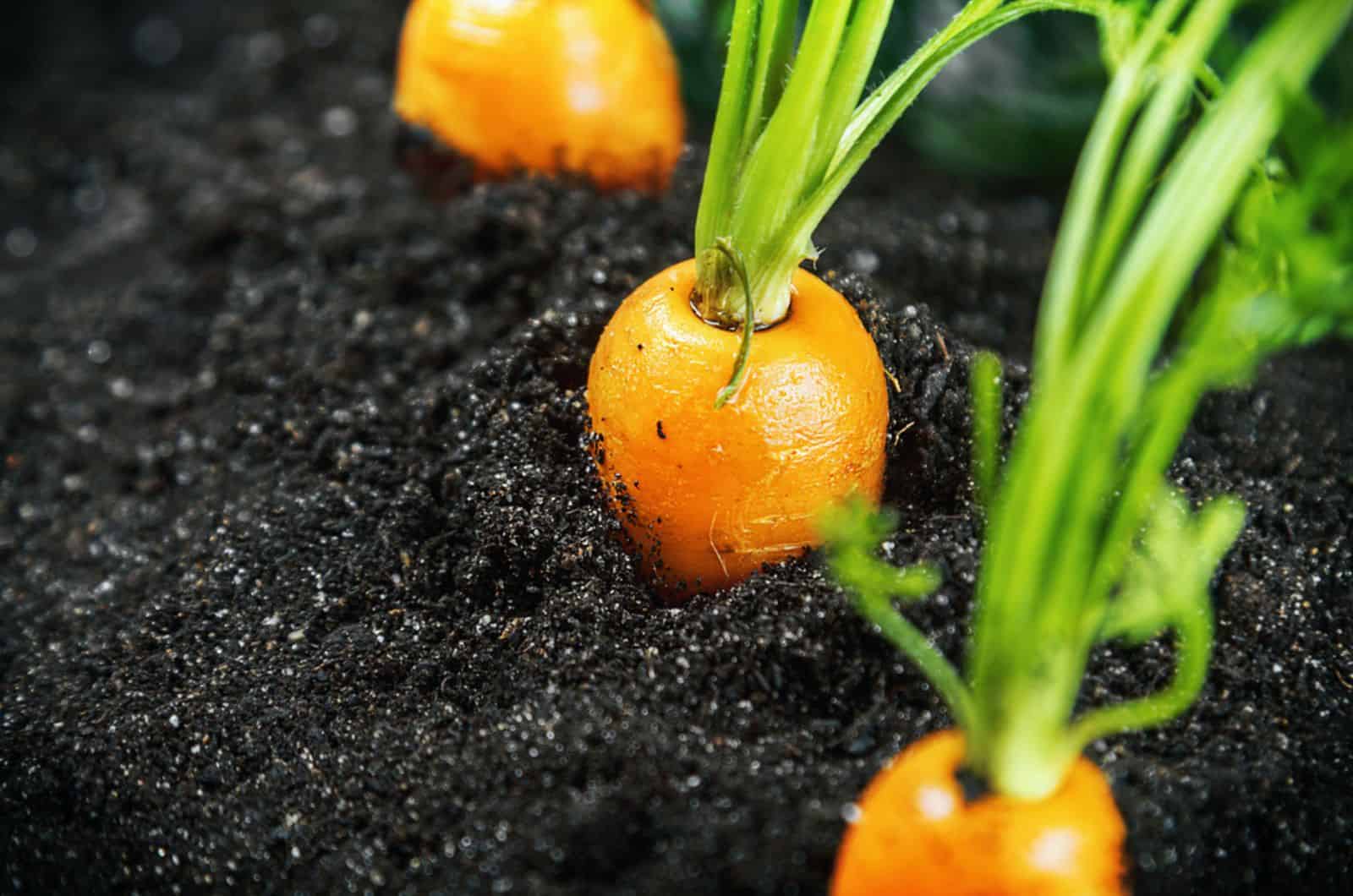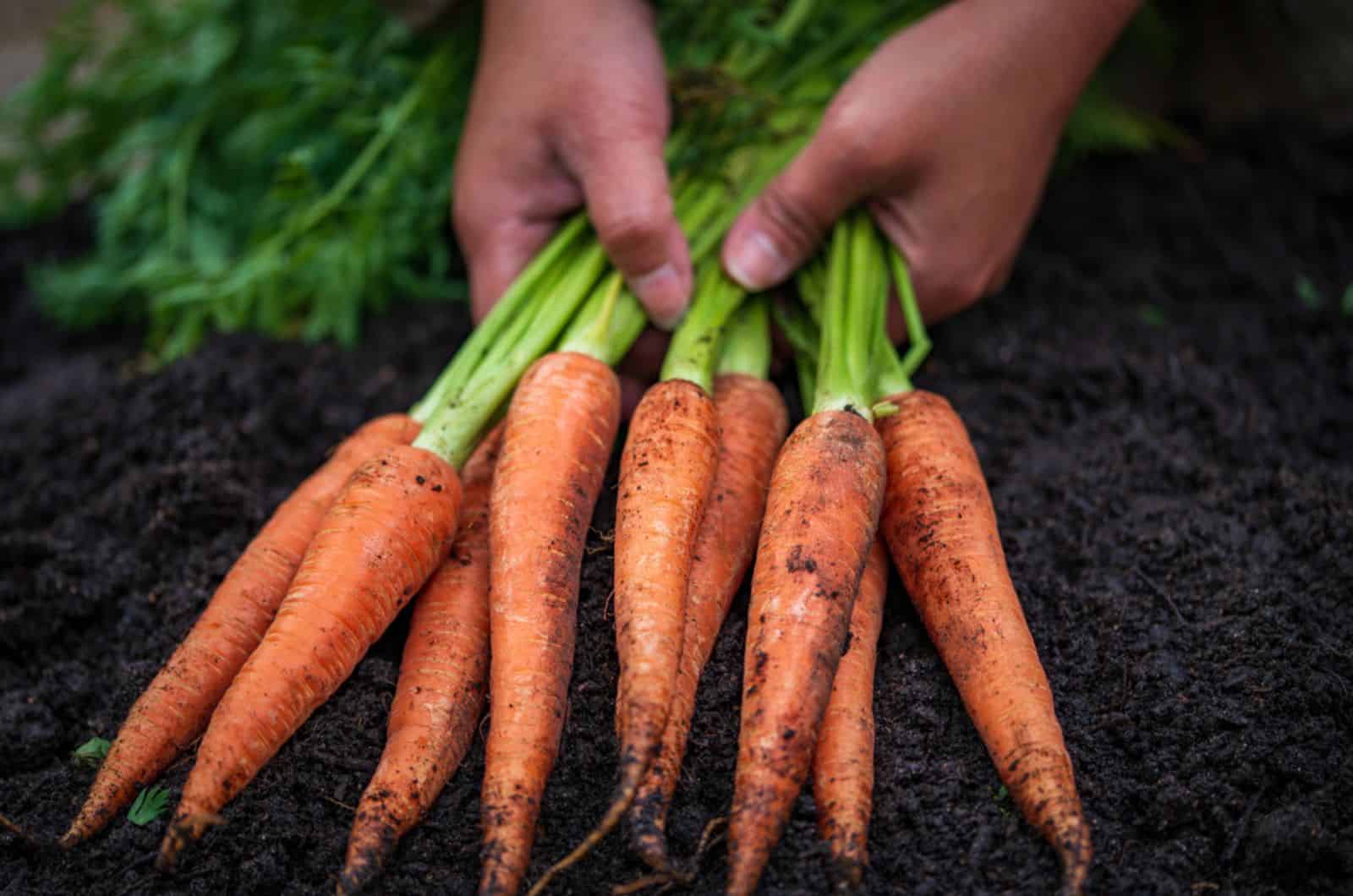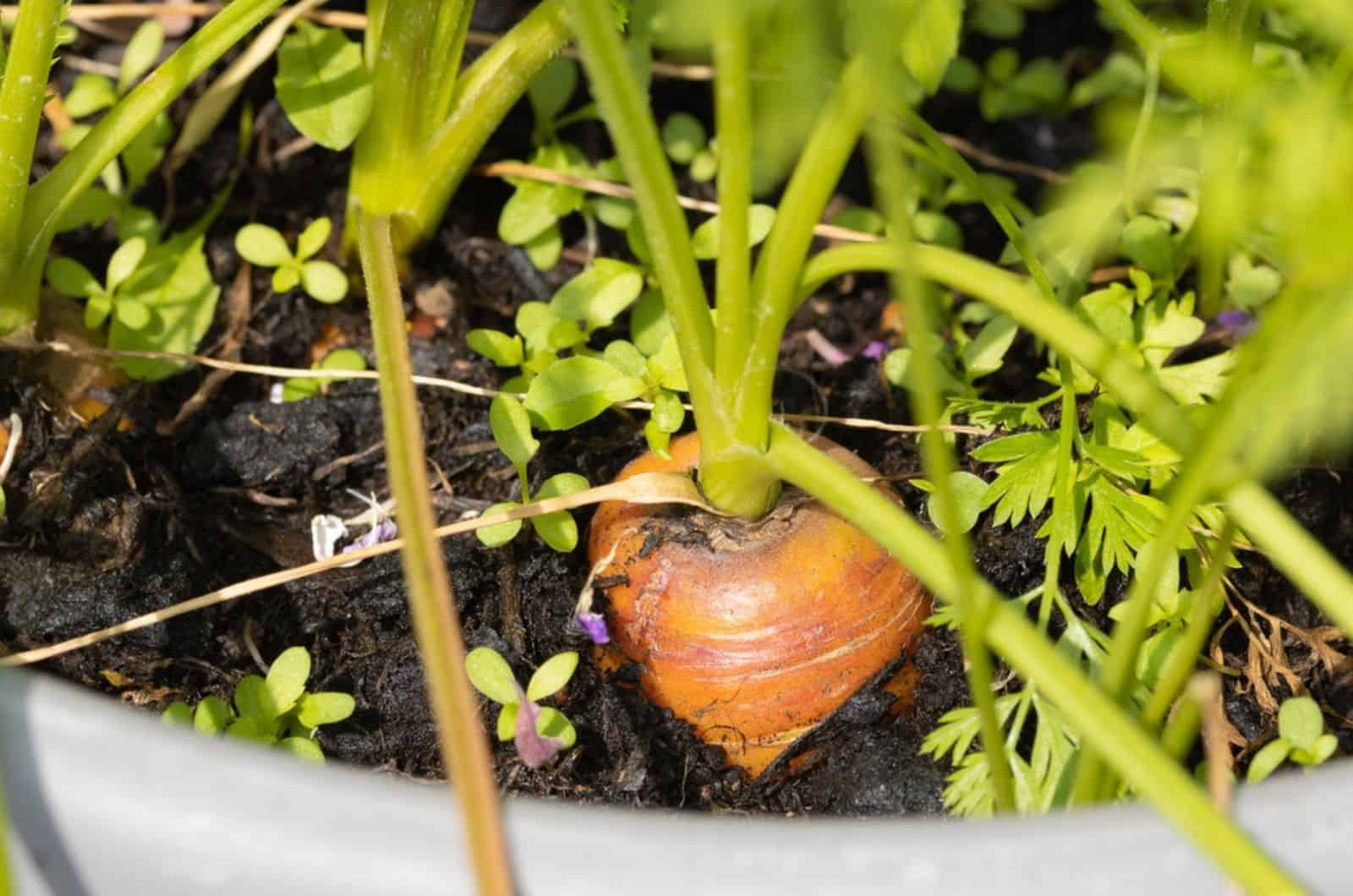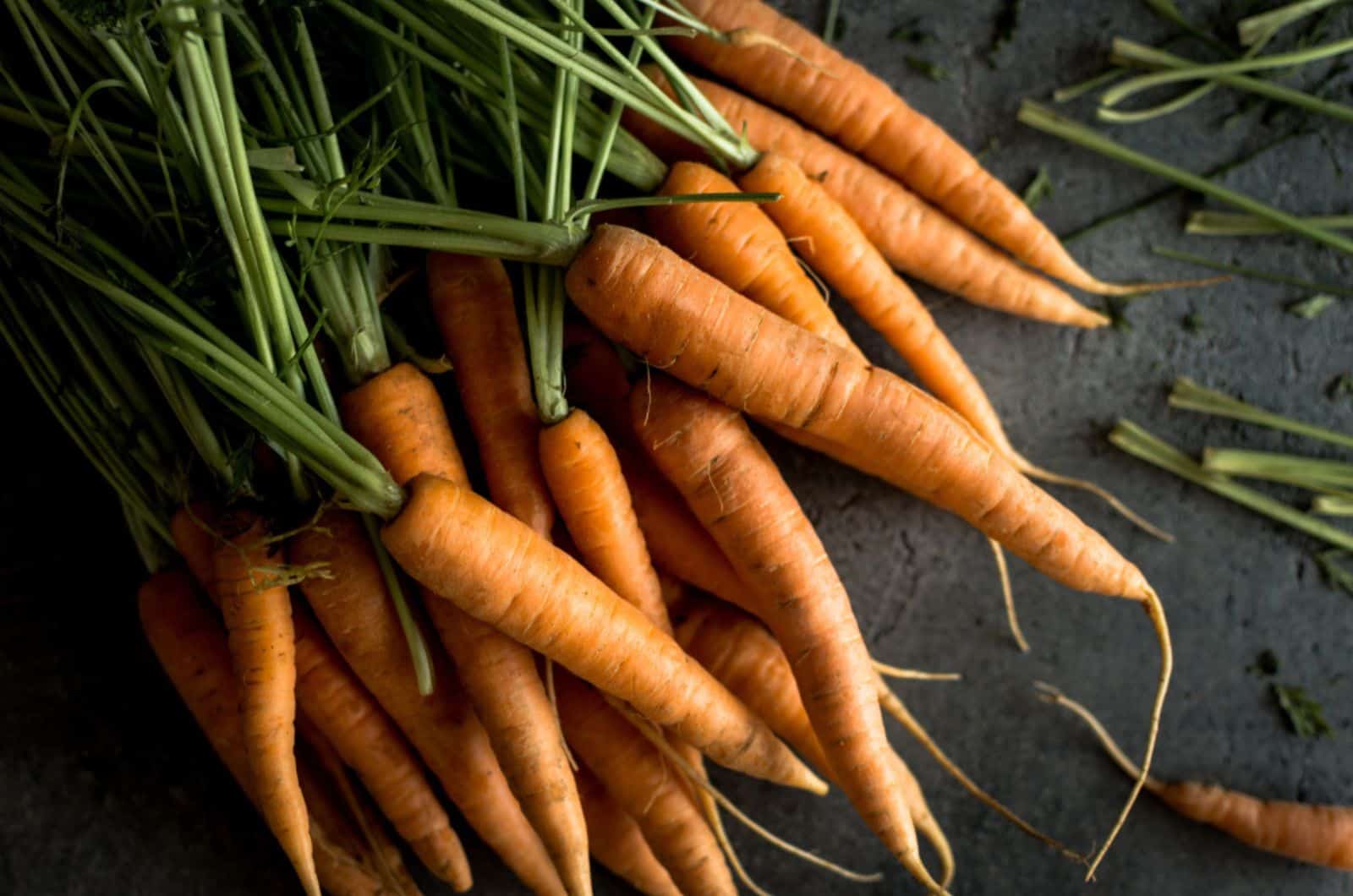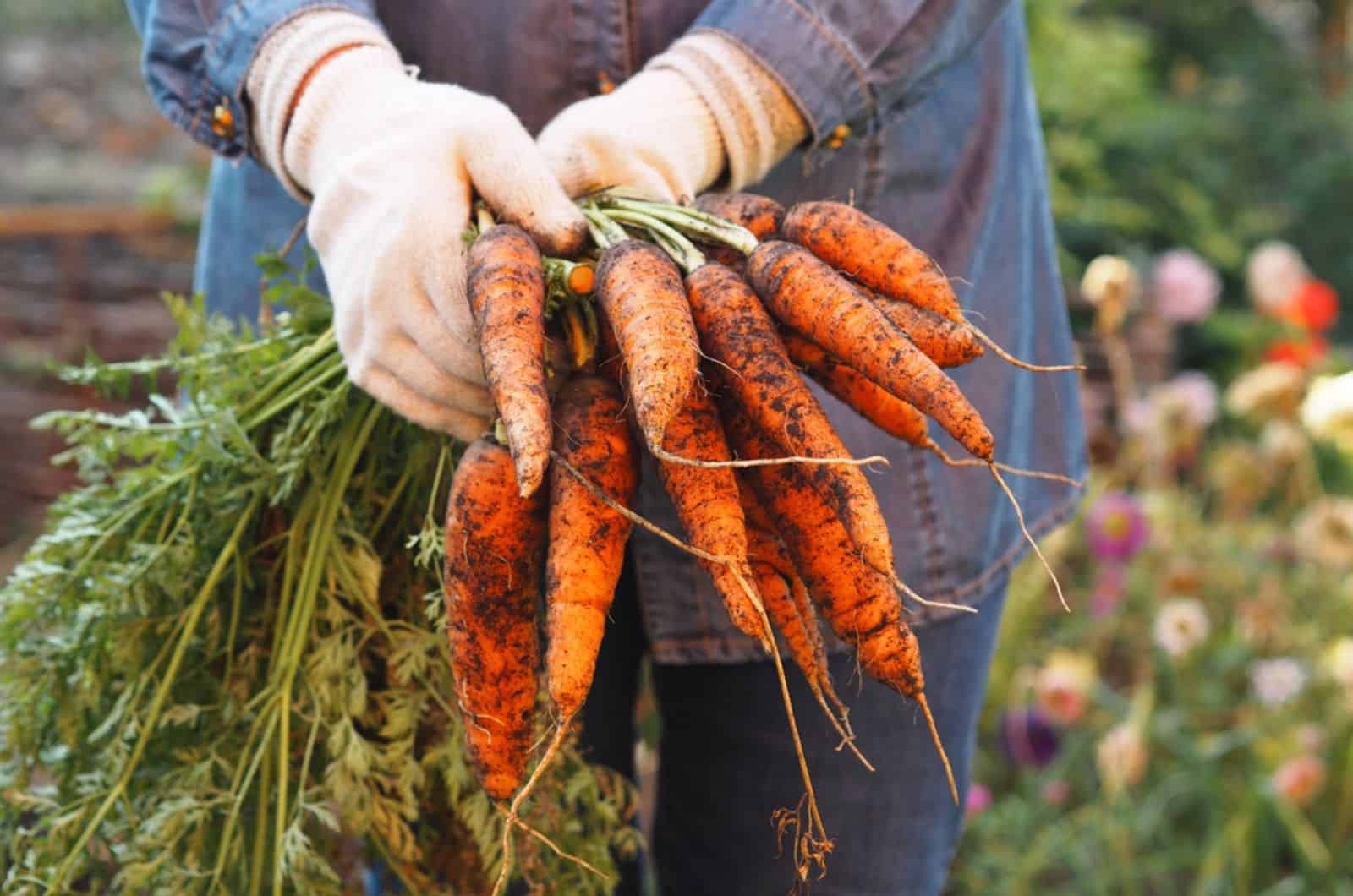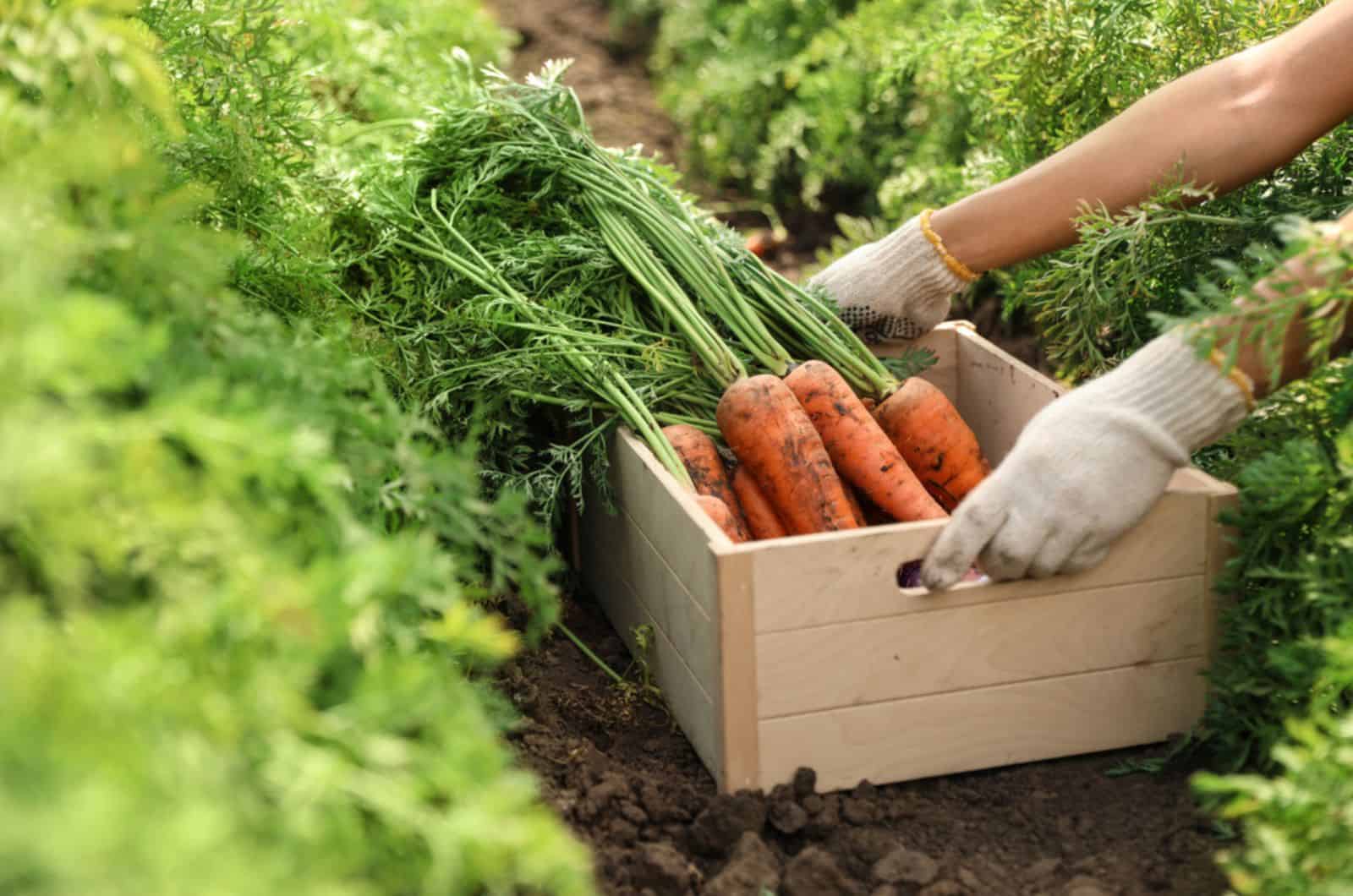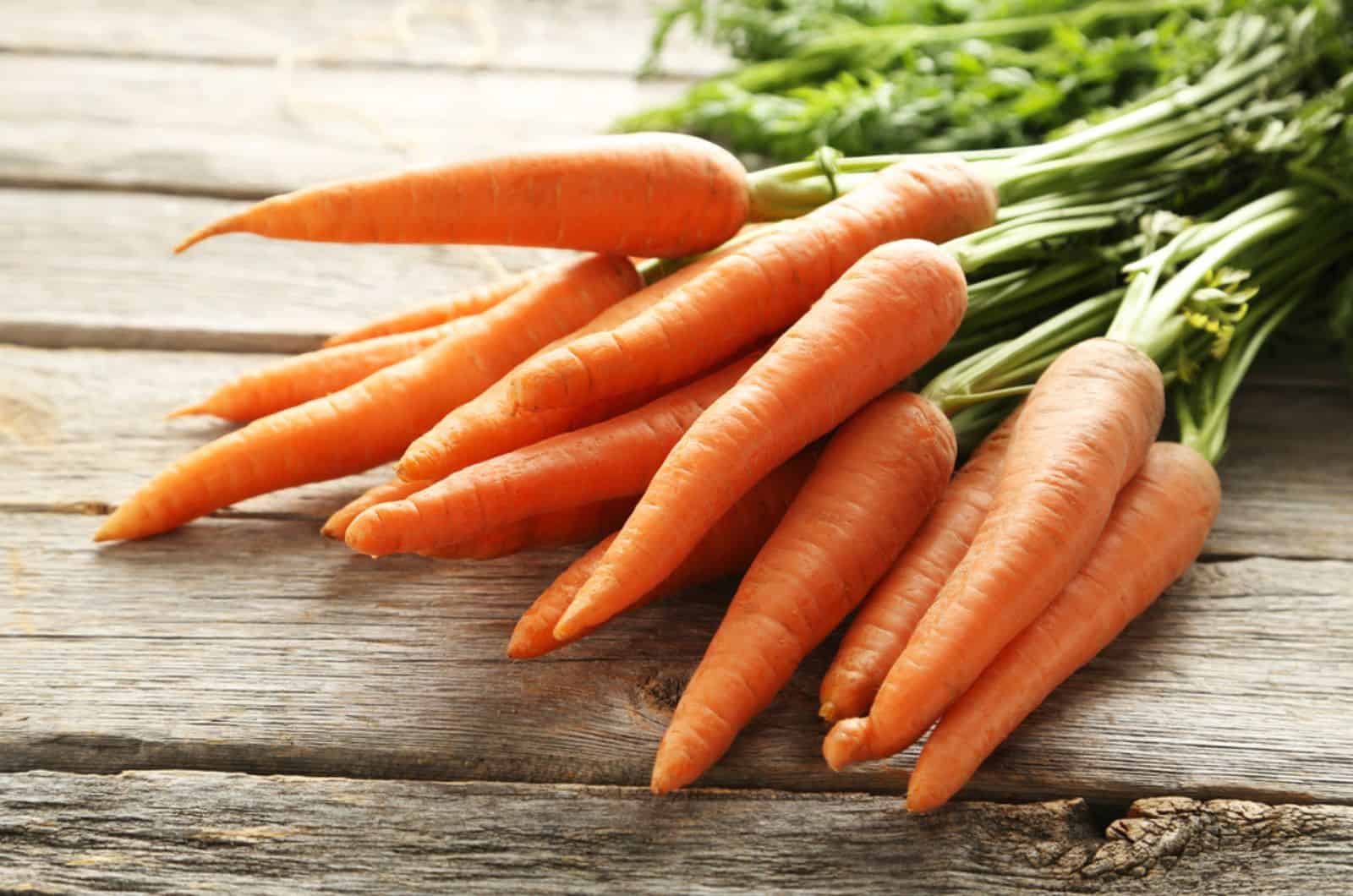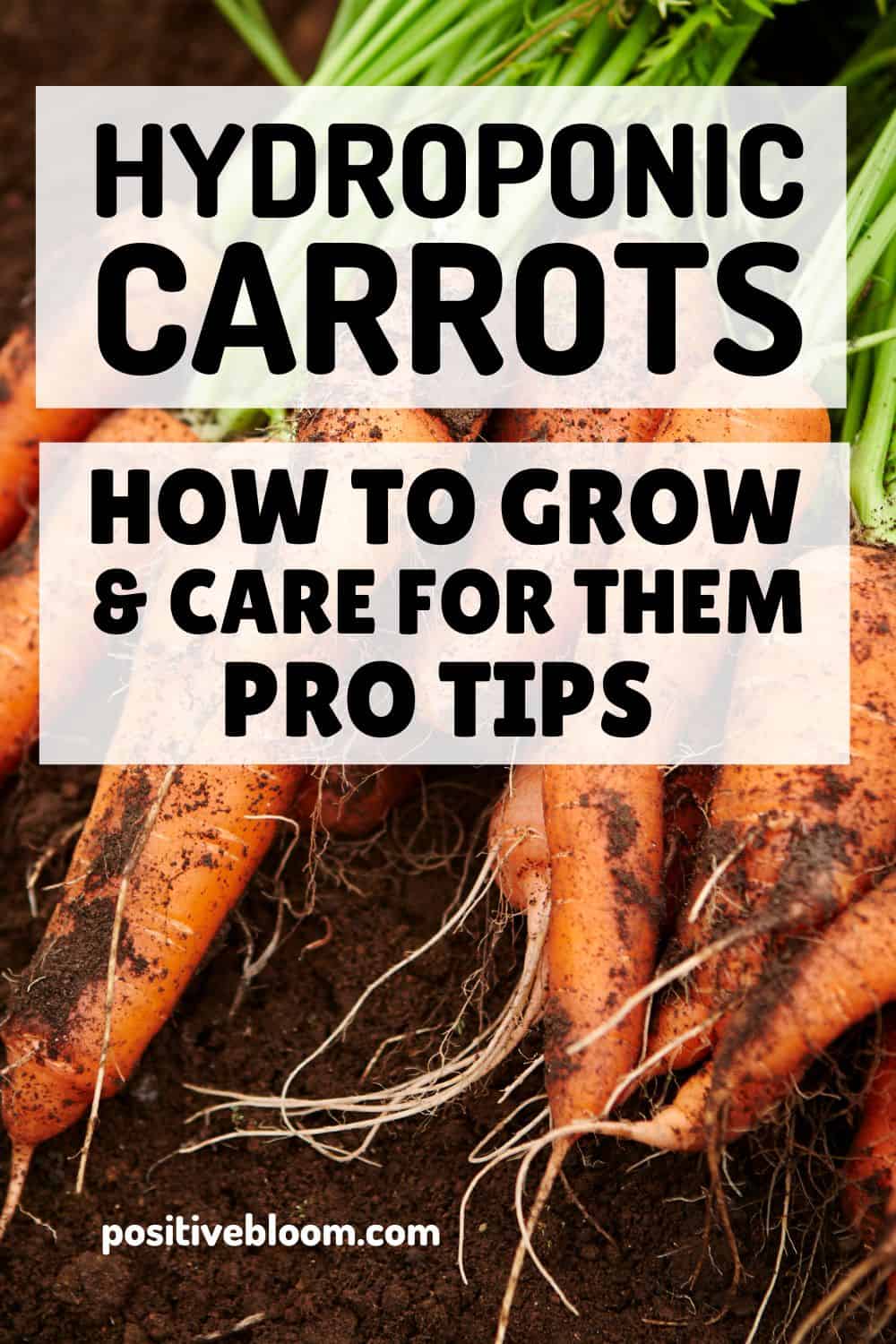I’m not sure I can name a person who doesn’t like carrots. They are delicious and make any dish better.
Well, gardeners also love these beauties. They are pretty easy to grow, and if you live in colder areas, carrots can be happy in outdoor gardens, too!
And if you don’t have enough space, you can grow hydroponic carrots.
I know it sounds like a hard task, but once you learn the basics and get the right equipment, growing carrots hydroponically may be your favorite way of getting new carrots.
Don’t worry; I’ll tell you everything you need to know about this carrot-growing method and its overall benefits.
Let’s get started!
How To Grow Hydroponic Carrots
Scientifically known as Daucus carota var. sativus, carrots are cold-hardy plants that are perfect for garden beds and pots.
If you want to grow your carrot plants hydroponically, you’ll first need to know about the types of carrots suitable (and best) for this growing method.
So, let’s start with that!
Best Carrot Varieties
Before you start your carrots in a hydroponic system, let’s see some common types and their features to help you decide.
Nantes
Nantes carrots got their name from the French city Nantes. You can easily recognize these carrots due to their intense orange cylindrical roots.
The great thing about Nantes carrots is that you can harvest them all year long. Therefore, you can have fresh carrots all year and combine them with seasonal veggies.
Nantes carrots are nutrient-rich; they contain vitamin A, so eating them will improve your immune system and vision. Additionally, they are rich in fiber, so you won’t have digestion issues if you start consuming them.
Chantenay
Another great carrot type is Chantenay; this is a French carrot, first introduced in1929. You can freeze them, eat them raw, or cook them.
The only tricky thing about these carrots is that they may lose their sweet and crispy flavor and become coarse if you don’t harvest them on time, particularly in the sweltering summer.
You can choose between two varieties, Red-cored Chantenay or Royal Chantenay.
Danvers
Danvers carrots were first introduced in the 1820s, and they were named after a town in Massachusetts, Danvers.
Their vivid orange root, sweet taste, and crispy texture make these carrots desired, and they are often used in salads, stews, or soups.
Imperator
If you didn’t know the name of the carrot that seems to be grown in every garden, here it is: the Imperator.
Their elongated, dark-orange roots taste incredible, and this carrot is a must-have veggie in many world cuisines.
Avenger and Tenderweet are the most common Imperator carrot varieties.
Pretty powerful names, don’t you think?
Light Requirements
When carrots grow in hydroponic systems indoors, they need grow lights once their seeds germinate. You’ll need to use grow lights during all carrot growth stages if you are cultivating them indoors.
There are many high-quality and affordable grow lights on Amazon.
You should aim for about 12–18 hours of light per day. Why? Carrots that are grown in garden beds outdoors receive that amount of natural light, and mimicking such light levels will give the best results.
Luckily, most grow lights also have a timer function; set the timer and let the grow light do the rest.
Hydroponic System
You can find many varieties of hydroponic systems, and the only thing to avoid is growing carrots in a nutrient solution only; instead, choose growing mediums.
The most common types are drip systems, wick systems, and ebb and flow systems.
Feeding
If you use hydroponic growing for your carrots, you’ll need to fertilize them weekly, but pay attention to dosage.
Don’t forget to add enough solution to the top layer of the growing medium. The tank below will supply the plants with the majority of their nutrients.
The ideal pH for carrot growth is around 6.3; they can tolerate a pH level up to 7, but it’s far from ideal.
Be careful when feeding the seedlings; they won’t withstand strong solutions, so dilute the fertilizers to half strength and increase the fertilizer concentration as the carrot matures.
Pay attention and don’t let the concentration go over 1400–1450 ppm.
Growing Medium
The essential thing to ensure about the growing medium is that the carrots can push through it as they mature. Otherwise, you’ll end up with plenty of split and malformed carrots.
The ideal growing medium for carrots is perlite, and it is advisable to use coarse perlite; using roughly 0.6 mm of perlite significantly increases their yield.
Alternatively, you can use 1/3 vermiculite and 2/3 perlite if you think that they won’t retain enough water. Another alternative is Rockwool.
Other growing mediums that are suitable for carrots include clay pebbles or hydroton. This solution typically costs more, but it’s less harmful to the environment.
Additionally, it’s an aquaponics-friendly growing medium.
Planting Carrots Hydroponically
Here is a complete guide on how to start carrots from seeds and grow them hydroponically.
Step 1: Prepare the potting mix
The first thing to do is to make the potting mix suitable for the hydro system.
Below is the mixture I recommend.
• 25% perlite
• 25% peat moss
• 50% sand
Wet the potting mix, place it in the pot, continue watering, and stop watering it when you observe water draining out of the pot.
Step 2: Sprinkle carrot seeds
Sow the seeds and press them gently so that they are about 1–2 inches below the potting mix line.
Add more of the potting mix you prepared and gently press the top. Pay attention to temperatures; the temperatures of the potting mix should range from 60 to 65 degrees Fahrenheit. If the temperatures are lower, germination won’t occur.
Step 3: Feed the carrot seeds
Prepare 2 cups of complete fertilizer and dilute them in about a gallon of water.
I mentioned that seedlings won’t withstand strong solutions, so before feeding them, I recommend diluting 2 tbsp of solution in a gallon of water.
Pour the solution onto the seedling every morning. If you collect the solution that runs down the pot; you can reuse it the following day.
Step 4: Find a spot for the growing medium
I mentioned the perfect temperatures for carrot seedlings; therefore, find a place with temperature ranges of 60 to 65 degrees Fahrenheit.
Temperatures are important for further development as carrots tend to be strong-flavored.
Also, please pay attention to the light level; you can either find a spot in your garden where your seedlings can receive natural light or place them near grow lights indoors.
How Long Does It Take To Grow Carrots In Hydroponics?
The time carrots need to grow in hydroponic systems mainly depends on the conditions you provide and the variety of carrots.
You can expect certain varieties to be ready for harvest in 60 days, and the longest you will wait for root crops is 90 days.
Appropriate temperatures, light, fertilizer, and water will help carrot roots to sprout faster.
When To Harvest Carrots
One of the significant benefits of growing vegetables in hydroponic systems is that you can pick them all year long.
However, there are several things to take into account before the harvest.
Carrots mature in roughly 70 days, but you can begin harvesting young carrots after only 50 days (if you like baby carrots).
If it is chilly and humid outside, carrots may take a little longer to be ready for harvest. If it’s hot and dry outside, you can harvest earlier.
I pick my carrots in the early mornings as they taste better when fresh, and I love that crisp texture.
Common Issues
We’ve seen the benefits of growing carrots using the method above.
To avoid malformed carrots and other severe issues, there are some things that you should pay attention to.
Let’s see some common problems with this growing method.
Roots Take Too Long To Sprout
If carrot roots are taking too long to sprout, this can be because of a number of things, such as compacted soil, an abundance of nitrogen, or root damage.
How to deal with this issue
• The soil needs to be loose, and the carrot roots should have enough space to spread.
• If the temperatures are higher, give your carrots more water and check if the nitrogen level in the soil is optimal.
Yellow Leaves
Many growers have experienced this issue, even though they gave their carrots the best care (or they thought they did).
Pests, illnesses, and nitrogen deficiency are some of the possible causes of leaf discoloration.
Nitrogen helps plants develop a more robust root system.
Pests take the nutrients from plants, weakening plants and causing yellowing and wilting.
Alternaria is one of the most prevalent diseases that affect carrots. These pathogens are the most common on garden plants.
Pests & Illnesses
Numerous pests and illnesses can affect carrots as well.
Black rot may occur, which causes black blotches, and the plant is likely to die if you don’t treat it on time.
Carrot rust fly larvae are the most common pests that affect carrot plants. It’s essential to keep an eye out for disease and pest indications so that you can provide early treatment.
The best way to prevent pests is by crop rotation and regular inspection.
Hydroponic Gardening Pros & Cons
There are plenty of reasons why you should try growing carrots or other root veggies hydroponically.
But there are also some drawbacks to this method.
Let’s have a look at everything.
Pros
Here are a few reasons why you should choose hydroponic methods over ground farming.
Plants Are Healthy And Strong
Research has shown that plants grown in a hydroponic system tend to be healthier and stronger than those grown in soil.
It has become a more and more popular growing method, and even commercial farmers use it.
Plants that grow hydroponically are less vulnerable to pests and illnesses.
Therefore, you won’t need so many pesticides and fungicides, and we are all aware of the harmful consequences of these substances.
Saves Water
Water requirements are another factor we may use to compare soil with hydroponics.
Believe it or not, we use more water when growing plants in the soil. How come? Water will evaporate from the soil, which means we’ll need to supply it constantly.
On the other hand, plants cultivated hydroponically require less watering as water circulates continuously.
Easy To Use
Contrary to popular belief, working with soil is not necessarily simpler than hydroponics. I highly recommend using hydroponic systems if you are not into digging and de-weeding.
Bear in mind that both ways will provide plants with nutrients and water.
Better Yield
The yield may be the factor that highlights the biggest difference between ground farming and hydroponics.
Statistics indicate that plants grown in a hydroponic environment produce more and are healthier and more nutrient-rich.
Saves Space
Hydroponics is a fantastic way to conserve space if you grow plants with narrow root systems, primarily when you utilize hydroponics to grow them vertically.
Using hydroponics allows you to save a significant amount of room while simultaneously enjoying improved production and time and water savings.
Cons
Nothing is perfect in this world, and the same applies to hydroponic systems.
Let’s see the three major disadvantages of this method.
Expensive
You’ll need to prepare more money if you decide to grow plants in hydroponics.
They are more expensive and also harder to construct than a conventional garden. Believe it or not, some can cost you more than $500.
Additionally, a hydroponic system requires nutrition solutions and water that can circulate, both of which are costly operating expenses.
Requires Regular Inspection
Compared to conventional plant cultivation, hydroponics demands higher supervision and micromanagement.
All system components, such as lights, temperature, numerous facets of the hydroponic nutrients, pH, and electrical conductivity, need regular attention to create meticulously controlled conditions for growth.
In order to avoid accumulation and obstruction, the nutrient solution must also be cleansed and changed on a regular basis.
Waterborne diseases
Since hydroponic plants are cultivated in water rather than soil, the prevalence of waterborne infections is much higher.
Infections can swiftly spread across the system as a whole, impacting all plants due to the system’s continual water circulation. In extreme circumstances, a waterborne illness can quickly eliminate all the plants growing in this system.
Water culture may be challenging for beginner growers as plants tend to rot if all requirements aren’t met.
Are Veggies That Are Grown Hydroponically, Nutritious?
Yes, veggies don’t lose any nutrients when grown hydroponically.
The growing medium doesn’t impact the nutritional value of veggies, but some other factors do.
The variables are related to the veggie or fruit type, the season in which it is picked, the time it takes to consume the produce after harvest, and the handling and storage methods used from farm to table.
Also, keep in mind that it’s unlikely for these variations in nutritional levels to have a big effect on general health. Simply put, the more delicious veggies you consume, the better, and that is the main takeaway from the majority of nutrition experts.
FAQs
How many carrots can be grown in a hydroponic garden?
There’s no rule on how many carrots to grow in a hydroponic garden. A few things to consider are the size of the hydroponic garden, and the space carrots need between each other.
As long as the growing medium is of adequate size and you provide your carrots with enough nutrients, the sky’s the limit!
What does “hydroponic” mean?
Hydroponic is the term that encompasses hydroponic ways of growing plants, i.e., plants can be grown without using soil. Water is used less in hydroponic systems than in conventional soil-based ones. Compared to conventional soil-based farming practices, hydroponic cultivation enables faster growth and greater yields.
What is the best way to grow carrots?
The best way to grow carrots in outdoor gardens is to ensure enough light, appropriate soil type with a pH of 6.0–6.8, and about an inch of water weekly.
They do best in raised beds when grown in loose and well-draining soil. Transplanting carrots should be avoided.
Wrapping Up
Hydroponic systems are a commonly used method nowadays, as there are many gardeners who don’t have enough space but love to grow tasty veggies.
Carrots are one of my favorite vegetables, and growing them is exciting and fun, not to mention the harvest part, yummy!
Hydroponic carrots can be successfully grown, and a hydroponic growing system may also bring better yields and tastier crops.
Now that you know how to do it, nothing can stop you from growing tasty carrots!
Like this post? Share or pin it for later!

